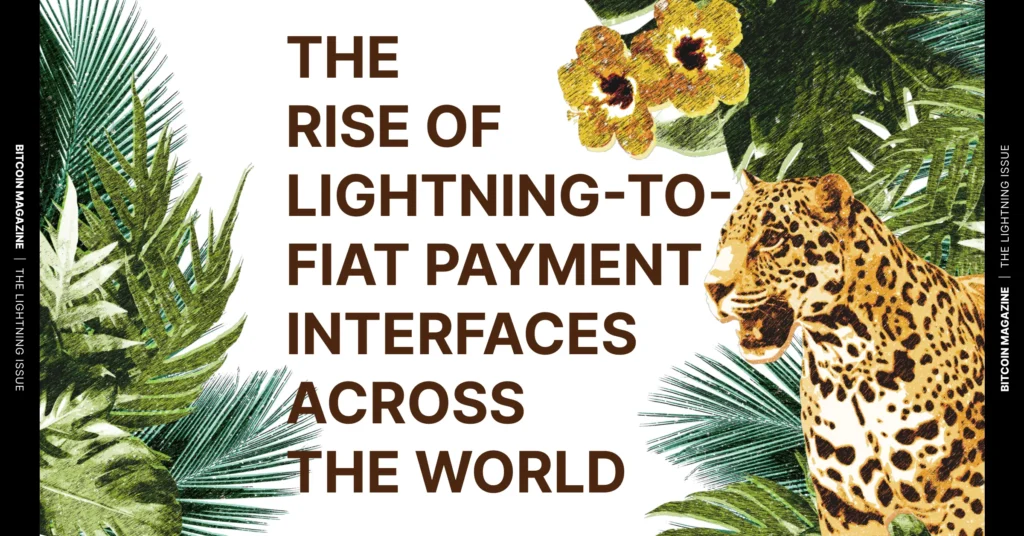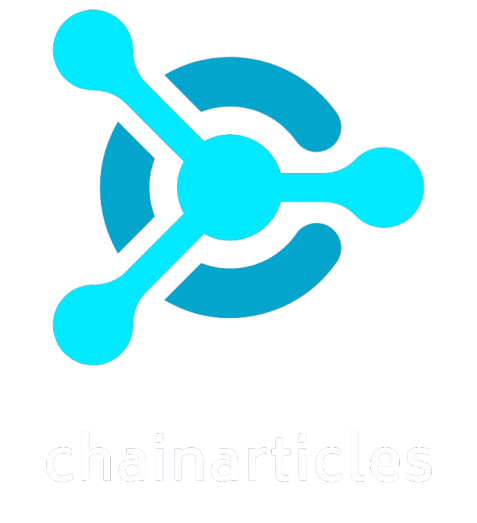
Welcome to the jungle — the Bitcoin Jungle.
Bitcoin Jungle is a bitcoin circular economy located in the Puntarenas province of Uvita, Costa Rica, where over 600 merchants accept bitcoin. It’s also the place Francis Pouliot has called home for the past three years.
And the Canadian expat and founder of Bull Bitcoin wants other Bitcoiner expats who visit the region, and Costa Rica at large, to feel how he feels in the country — welcomed.
For this reason, he and the team at Bull Bitcoin created a web app that works both within the Bitcoin Jungle wallet, an open source, custodial Lightning wallet, and in conjunction with other Lightning wallets.
Through the web app interface, Bitcoin enthusiasts can pay for almost anything with bitcoin over Lightning, regardless of whether the merchant or counterparty with whom they’re transacting accepts it.
Using the Bitcoin Jungle app or the web app directly, users can pay with bitcoin and have their bill settled in the local fiat currency, colónes, over the country’s national electronic payment system, SINPE (Sistema Nacional de Pagos Electrónicos). (This is comparable to how Strike, Bringin, and Bull Bitcoin enables users to pay with bitcoin over Lightning to settle fiat bills via the United States’ ACH system, Europe’s SEPA system, and Canada’s Interac system, respectively.)
With more than 90% of the country’s residents over the age of 18 using SINPE for daily payments, the Bull Bitcoin app makes it very easy for nonresidents of Costa Rica to participate in the country’s digital economy (you must be a resident of the country to open a SINPE account) and/or for those who want to live on a bitcoin standard.
“This allows people to live exclusively off of bitcoin,” Pouliot told Bitcoin Magazine. “Every merchant that accepts fiat payments over SINPE in Costa Rica can now accept payments from a Bitcoiner.”
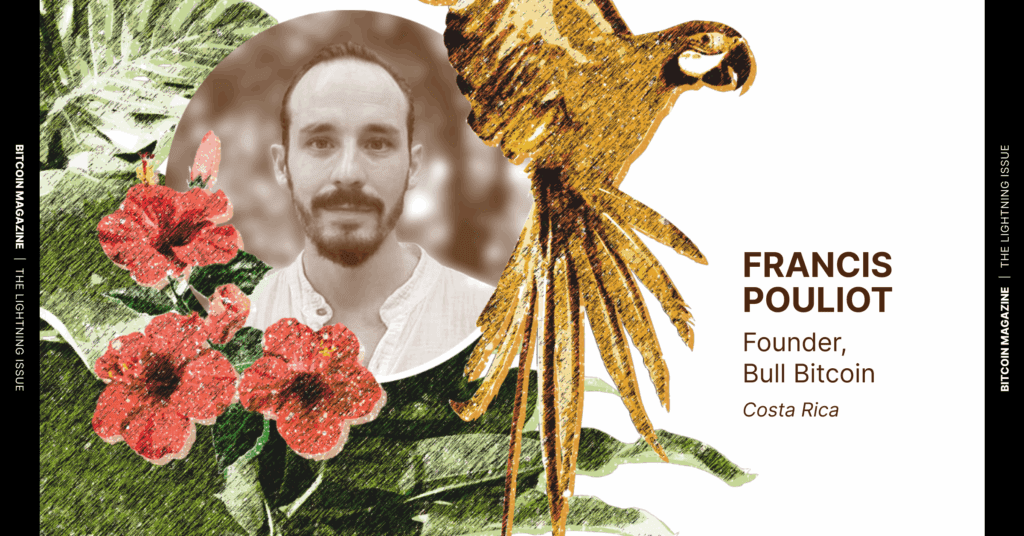
How the Bull Bitcoin Costa Rica Web App Works
When users use the Bull Bitcoin web app in Costa Rica, they make a payment to a Bull Bitcoin Lightning node on the backend. Once Bull Bitcoin receives this payment, it makes a fiat payment via SINPE on the user’s behalf.
Bull Bitcoin processes hundreds of such payments daily in Costa Rica. From May 2024 to May 2025, Bull Bitcoin processed 32,774 bitcoin-to-fiat conversions.
Pouliot prides himself on making sure the Bull Bitcoin web app is as dependable as a credit card, because he knows that many in the country, himself included, depend on it day in and day out.
“If you’re at the gas station in Costa Rica and you don’t have a credit card and you just filled up your car, you need that Lightning-to-SINPE payment to work because otherwise you’re screwed,” explained Pouliot.
“This is how a lot of us live here. We don’t use credit cards. We don’t have cash. So, if I go to the gas station, this app better fucking work. Otherwise, I just filled up my car and I have a very angry gas station attendant,” he added.
“The success rate is well over 99% — almost 100%. I don’t even remember any Lightning payments failing. And that’s because the Bull Bitcoin is managed by hardcore Bitcoiners that know how to navigate Lightning Network liquidity.”
Pouliot added that the hardest part of keeping the app functioning properly isn’t running the Lightning node or plugging in the banking API, though. Instead, he said the biggest challenge is sourcing the fiat liquidity in a not-so-widely-accepted fiat currency like the colón.
“There is no international open marketplace for very low-liquidity fiat currencies and bitcoin,” explained Pouliot.
“Neither Kraken nor Binance or Coinbase list the colón — there’s no bitcoin-to-colónes order book. We need to sell that bitcoin to someone else to get the fiat in order to pay out the fiat merchant,” he added.
Pouliot explained that, because major bitcoin and crypto exchanges don’t list the colón, he essentially sets the exchange rate for it by constructing what he calls a “virtual bitcoin-to-colón exchange rate.” To calculate this rate, Pouliot factors in the colón-to-U.S. dollar rate and the USD-to-bitcoin rate and then adds a 1% gross margin rate to help Bull Bitcoin not lose money on the exchange rate while still keeping the product accessible to users.
He stressed that maintaining liquidity is truly the biggest challenge in this process, and he tipped his hat to others around the world who offer a similar service with a comparable degree of reliability.
“Whenever you see a group of people that have achieved this seamless flow, know that while it sounds so simple, it can be very complicated on the back end”, said Pouliot. “That’s why, for example, I find Tando so impressive.”
Kenya’s Tando
Kenya’s version of the Bull Bitcoin app isn’t a web app, but a proper app, though the team behind Tando was influenced by what Bull Bitcoin has done in Costa Rica.
“The Bitcoin Jungle team posted a video on their X where they went into a gas station and spent bitcoin while the merchant received the local currency,” Jason, one of Tando’s cofounders, told Bitcoin Magazine.
“I was like, ‘That’s pretty cool.’ We thought that would probably work here if Safaricom [a Kenyan mobile network operator] has an API,” he added.
“And with just a little research, we figured out that ‘Yeah, we can do this.’”
Jason and his co-founder, Sabina Waithira, launched the app in July 2024, enabling Kenyan users to settle bills in Kenyan shillings over M-PESA (Safaricom helped launch M-PESA), a mobile money system that operates in more than a half dozen African countries, while paying with bitcoin over Lightning.
Using Tando, users can pay bills, buy goods, and send Kenyan shillings with nothing more than a recipient’s phone number and a Lightning wallet. (M-PESA only requires a recipient’s phone number for money transfers.)
The user sends bitcoin from the Lightning wallet of their choosing, Tando’s Lightning node receives the bitcoin, and Tando settles the fiat M-PESA bill for the sender.
All of this happens within seconds.
I know firsthand because I used Tando while I was in Kenya for the African Bitcoin Conference in 2024.
While in Kenya, I paid taxi fares and restaurant bills over M-PESA using Tando, something I otherwise wouldn’t have been able to do, since I wasn’t in the country long enough to get an M-PESA account and fund it with Kenyan shillings. As a short-term visitor, it was much easier to spend bitcoin into the local economy with Tando, which doesn’t require a sign-up process.
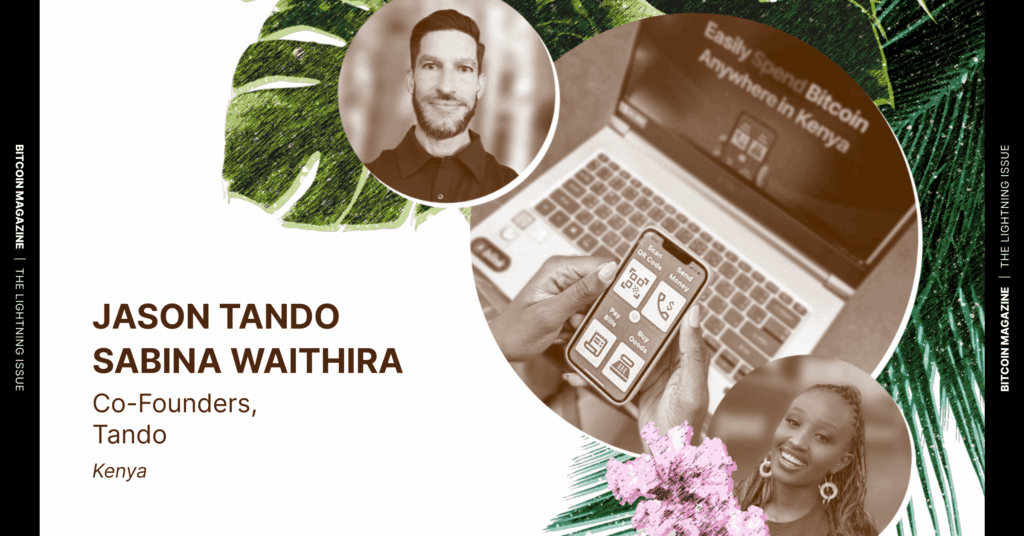
Making Bitcoin Easier To Spend For Kenyans
Waithira wasn’t familiar with what was happening with Lightning-to-fiat payments in Costa Rica before Jason brought it to her attention.
What motivated her to bring Tando to life was instead her own experience of trying to spend bitcoin in Kenya.
“I used to work for Bitcoin Dada [a virtual Bitcoin education platform and sisterhood for African women] and would sometimes get paid in bitcoin”, Waithira told Bitcoin Magazine. “It was hard to spend that Bitcoin directly.”
While Waithira came up with creative ways to spend her bitcoin, like tipping waiters and waitresses at restaurants with it, she ended up facing the same question from those service workers time and time again: “How can I spend this bitcoin?”
“We didn’t have a great answer to this question”, said Waithira. “So, this is also what inspired Tando.”
Waithira added that “Kenyans are very fast learners and very curious”, which makes it easy to onboard them to Bitcoin and Tando, while Jason shared that Kenyans have been primed for Bitcoin, as they’ve already gone through the mobile money revolution with M-PESA over the past decade and a half.
Waithira also noted that she and Jason have aimed to make Tando as easy to use as M-PESA is — to not scare users off with a complicated interface.
“We wanted to mimic the experience of using M-Pesa”, explained Waithira.
“I don’t like thinking when I use apps, and I don’t think our customers do either”, she added. “We kept this in mind as we designed Tando.”
Waithira and Jason apparently did something right, as Tando has been gaining traction with everyday Kenyans slowly and steadily. It now processes over 100 transactions per day.
And beyond just helping more Kenyans live on a bitcoin standard, the app inspired a developer on the other side of the African continent to create something similar for the citizens of his home country, Ghana.
Ghana’s BitSpenda
Bright Kportiklah also attended the 2024 African Bitcoin Conference and was one of many attendees who used Tando while in Kenya.
Drawing from the inspiration he felt in Kenya as well as the connections he made at the conference, the computer programmer headed back to Ghana after the conference with the intention of building his own version of Tando.
Within a few months, Kportiklah had the beta version of a Lightning-to-fiat interface he’d created — BitSpenda — up and running. And he did this thanks in part to help from seasoned Nigerian Bitcoin entrepreneur Bernard Parah, founder and CEO of Bitnob, whom Kportiklah had met at the conference.
Bitnob is an almost decade-old financial services company that leverages payment infrastructure built on Bitcoin and Lightning. Parah and the team at Bitnob helped Kportiklah connect to local off-ramps in Africa, including mobile money networks in Ghana and Kenya and bank accounts in Nigeria. (BitSpenda currently serves the citizens of these three countries.)
“It’s very difficult to connect to these local off-ramps via API as a small fintech,” Kportiklah told Bitcoin Magazine.
“When I told Bernard at the conference that I wanted to build something similar to Tando, he gave me a contact to reach out to in Ghana,” he added.
This contact helped Kportiklah connect BitSpenda to Ghana’s mobile money system.
Kportiklah also added that Kgothatso Ngako, the founder of Machankura (which allows users to send bitcoin over Lightning using a feature phone), and Onionsman of Bitpension (a bitcoin pension account platform based in Nigeria) have also advised him on the project.
“I met all these people at the conference in Kenya, and they have been so instrumental in helping me build this,” Kportiklah said.
BitSpenda went live on March 7 this year.
To use the web app, senders can look up the recipients they want to send money to by phone number in Ghana and Kenya and by bank account number in Nigeria.
Once the sender has found the recipient they are looking for and decides to make a payment, a Lightning invoice or QR code is generated, and, almost instantly, the bitcoin the user sends is converted into the recipient’s local currency and the transaction is settled.
“Within 30 seconds, the recipient will receive the money, and the sender can see on BitSpenda whether the money was received or not,” explained Kportiklah.
If a transaction fails, as has only happened in less than 1% of transaction attempts thus far, Kportiklah can manually send the payment to the recipient and notify the sender that the transaction has gone through.
As of late April 2025, the app had processed thousands of U.S. dollars’ worth of transactions. Kportiklah claimed that the app has encouraged more Ghanaians to use bitcoin not just because they feel that bitcoin is a better money than Ghanaian cedis, the country’s fiat currency, but for another important reason, as well.
“Ghanaians are more willing to use Bitcoin because of the value it offers in terms of finance,” explained Kportiklah.
“For example, in Ghana, if you keep your money in your bank accounts, at the end of the month, the bank will charge fees, but this isn’t the case when people use bitcoin instead of their bank,” he added.
“Some people also just see bitcoin as a currency that has more value as compared to the Ghanaian cedi and choose to use it for that reason.”
Kportiklah also noted that an app like BitSpenda is particularly helpful in Ghana, where outside of the Bitcoin circular economy that Kportiklah serves as the technical advisor for — Bitcoin Dua — almost no merchants accept bitcoin.
And he aspires to not only offer this service to Ghanaians, but to Africans in over a dozen countries.
“A year from now, we should be in no less than 15 African countries”, said Kportiklah.
It’s hard to doubt he’ll accomplish this when, in under four months, he was able to roll out BitSpenda in three countries.
Kportiklah said he’s currently completing the necessary paperwork to make BitSpenda available to members of the remaining 12 countries he wishes to service.
He’ll have to hurry, though, given that the team from Tando is looking to expand into Uganda soon and that a new web app built by a Senegalese developer — Banxaas — now enables bitcoin-to-fiat payments in Senegal, as well.
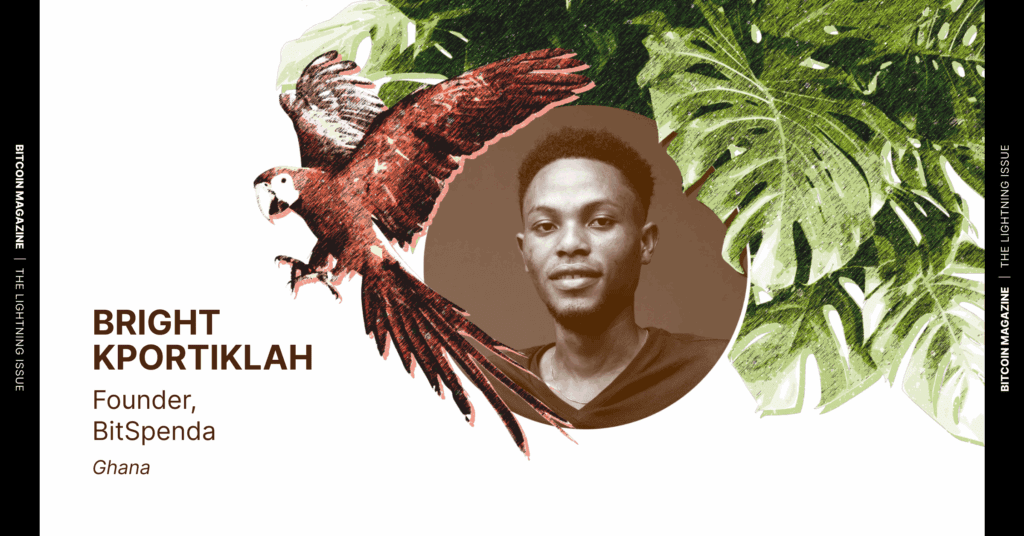
A Labor Of Love
The irony in what Pouliot, Waithira, Jason and Kportiklah have created is that they’re less motivated by making money than they are by making bitcoin money.
“This is not a profitable endeavor”, deadpanned Pouliot about Bull’s Bitcoin Costa Rica web app.
“Actually, this has a very high cost for us — it’s very complicated and there’s a lot of overhead. So, it’s done with the mindset of ‘Sure, maybe one day it’s going to be profitable,’ but we do this more to be part of the Bitcoin Jungle mission of maintaining infrastructure to facilitate Lightning”, he added.
“Not to say that it will never be a profitable business. I actually encourage people to consider that to be a potentially profitable business. But at scale, it’s really hard to pull off.”
Neither the founders of Tando nor Kportiklah have figured out a monetization scheme yet.
“Our business model is we get bitcoin”, said Jason half-jokingly.
He added that he and Waithira have fielded a number of requests for other wallets who want to use their Safaricom API, and that they’re considering charging a fee for these other wallets to do so. This doesn’t seem to be as much of a priority for them as getting Kenyans to view bitcoin as a medium of exchange, though.
Kportiklah is of the same mind:
“The goal for now is just to create a tool that will help people to spend Bitcoin with ease”, he said.
Toward the end of my interview with Pouliot, he highlighted once more how important it is to keep in mind that it takes a lot of work from dedicated Bitcoiners to pull off the “with ease” part, noting that initiatives like these are best created and managed at the local level by those who have a solid understanding of the traditional financial system with which they’re interfacing.
“These products are better built as grassroots projects, because they require knowledge of the banking system on the ground”, explained Pouliot.
“This is why we don’t have that many expansion plans, but I’m happy to support the other local initiatives with technology and advice”, he added before noting that he thinks what NostrPIX, another Lightning-to-fiat payment app, is doing in Brazil is cool.
He concluded by once more offering praise for his colleagues around the world who are successfully building and managing such interfaces:
“Whenever you see a local group of Bitcoiners pulling it off, be sure that they are fucking awesome and that it wasn’t easy to do.”

Don’t miss your chance to own The Lightning Issue — featuring an exclusive interview with Lightning co-creator Tadge Dryja. It dives deep into Bitcoin’s most powerful scaling layer. Limited run. Only available while supplies last.
This piece is an article featured in the latest Print edition of Bitcoin Magazine, The Lightning Issue. We’re sharing it here to show the ideas explored throughout the full issue.

